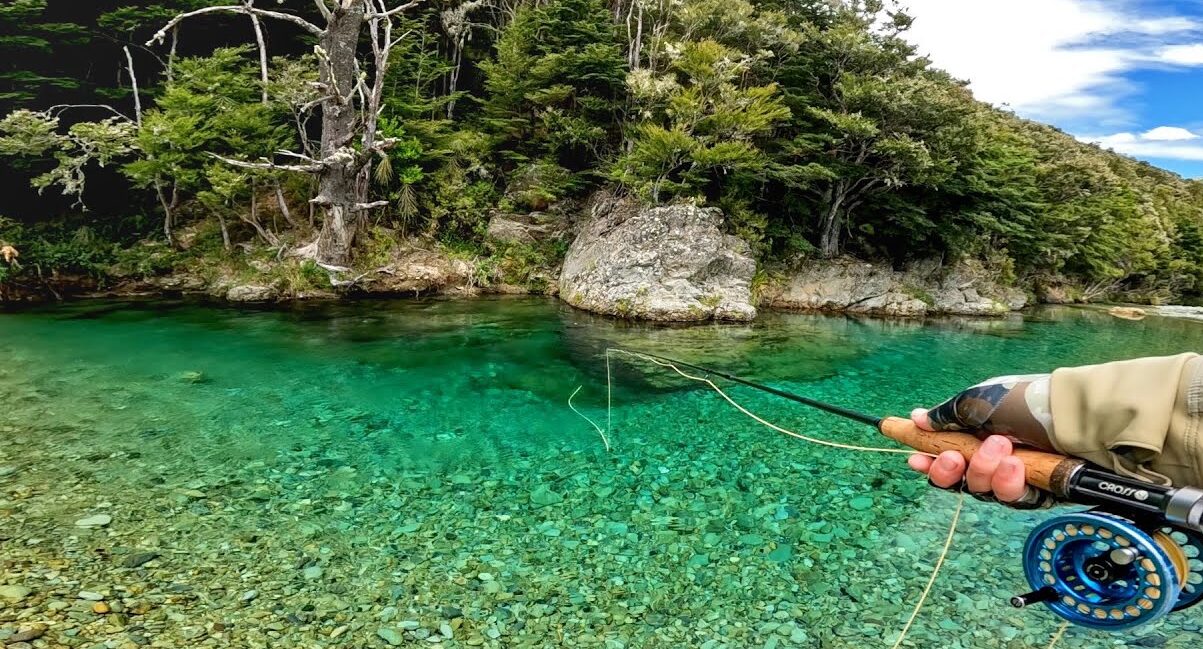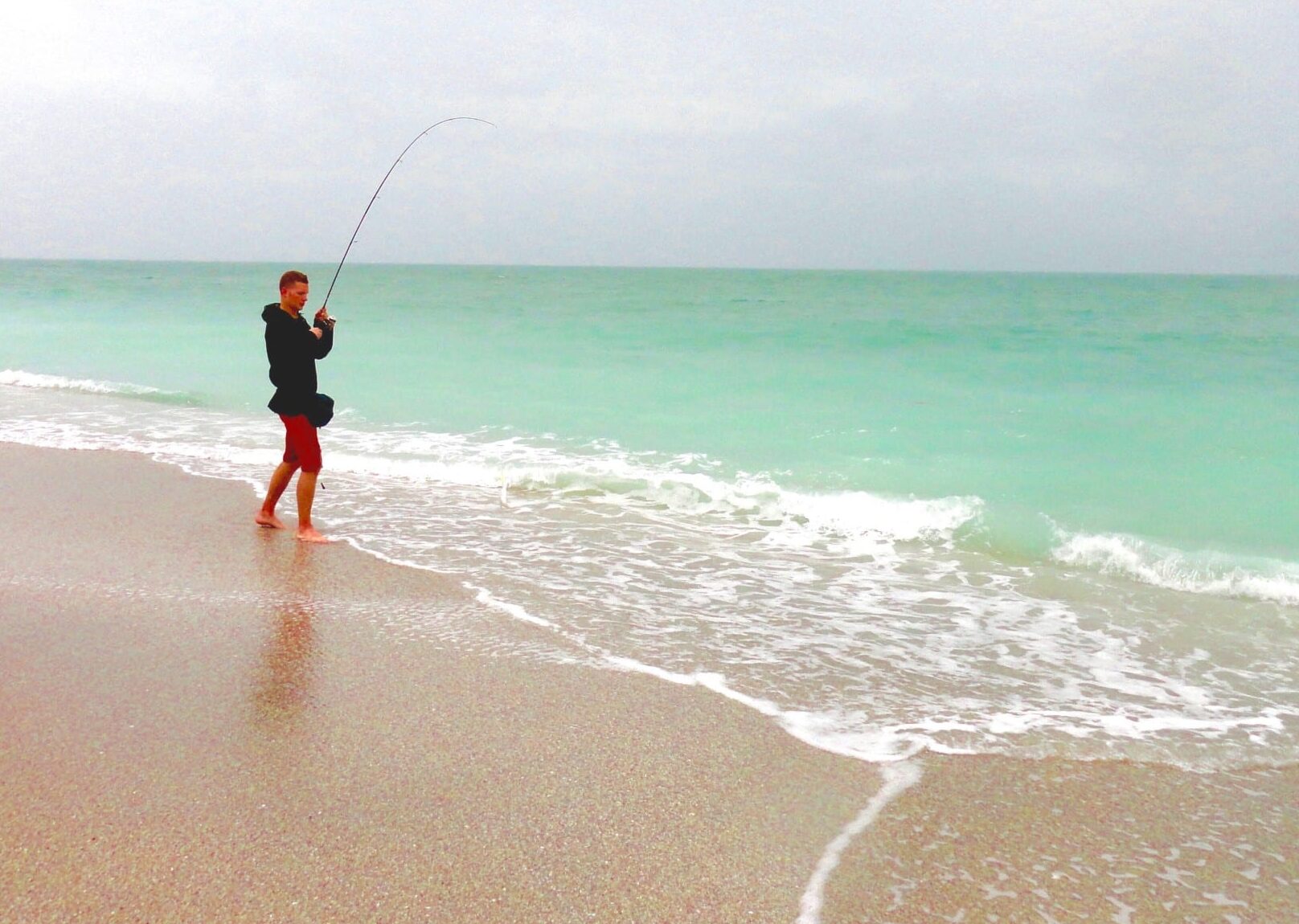Trout fishing in New Zealand is a unique and exciting experience that draws anglers from around the world. New Zealand’s ecosystem provides the perfect habitat for growing large, healthy trout, with a wealth of waterways ranging from fast-flowing mountain rivers to hydro canals, streams, and lakes. Brown trout were first introduced to New Zealand waters in 1867, with rainbows following in the early 1880s. Today, rainbow and brown trout can be found in most streams and lakes around the country, with some waters in the North Island being home to the purest strains of these species.
The appeal of trout fishing in New Zealand lies not only in the abundance of fish, but also in the country’s rich history of trout fishing. Trout fishing has been a popular pastime in New Zealand since the early 1900s, with the country’s unique growing conditions and natural environment conspiring to create the 20lb-30lb rainbow trout in the hydro canals of the South Island. The South Island is particularly renowned for its fabulous brown trout fishing, while the North Island’s brown and rainbow trout are legendary as well.

For those seeking a truly unforgettable trout fishing experience, New Zealand offers a range of options, from luxury fly fishing self-drive tours to backcountry expeditions. The Field & Stream Treasury of Trout Fishing describes New Zealand’s waters as a promised land that every trout angler worth his Wheatleys wants to fish. With its stunning scenery, abundant fish, and rich history, New Zealand is truly a paradise for trout fishing enthusiasts.
Understanding the Trout Species in New Zealand
New Zealand is home to a variety of trout species, including rainbow trout and brown trout. Rainbow trout were introduced to New Zealand in the early 1880s, descendants of the same McCloud River Steelhead that was stocked in Argentine Patagonia around the same time.
Brown trout, on the other hand, were introduced to New Zealand in the late 1800s from Europe. Both rainbow and brown trout can be found in most streams and lakes around the country, and some waters in the North Island are home to the purest strains of rainbow trout in the world. Additionally, Lake Taupo is home to a special breed of rainbow trout that grows quickly on a diet consisting primarily of smelt.
Understanding the habitat and behaviors of trout in New Zealand is essential for successful fishing. The Taieri River, for example, is a meandering peat-colored river with excellent dry-fly and nymph fishing to large brown trout. Sight fishing is almost 90 percent of trout fishing in New Zealand, making it important to be able to spot the fish and understand their behavior. Additionally, large coastal cutthroat trout can be captured in streams and rivers when steelhead and salmon have migrated to the ocean.
Techniques for catching trout in New Zealand vary depending on the species and location. Fly fishing is a popular method, and there are many experienced guides available to help visitors navigate the different waters and techniques. Proper techniques and tactics are important for success, especially when targeting brown trout. Overall, fishing for trout in New Zealand offers a unique and exciting experience for anglers of all skill levels.
Exploring the Best Trout Fishing Spots in New Zealand
New Zealand is a world-renowned destination for trout fishing, with some of the best spots located on the North Island. The Central Plateau region is particularly famous for its large rainbow trout, which can be caught in both rivers and lakes. Some of the best fishing spots in the area are found off the beaten track, making for a more secluded and adventurous experience. Taupo-based fly fishing guides offer access to a range of world-class fly fishing opportunities, from local day trips to multi-day backcountry expeditions. While fishing in New Zealand can be challenging, the reward of catching huge trout in a beautiful setting is well worth the effort.
The South Island of New Zealand offers even more remote and challenging fishing opportunities, with classic Kiwi-style trout stalking on famous rivers like the Mataura and the Awarua.
Helicopter trips can take anglers to even more secluded and untouched fishing spots. The hydro canals of the South Island are also home to some of the largest rainbow trout in the world, with some weighing between 20 and 30 pounds. Fly fishing on the South Island is a bucket-list experience for many anglers, with the chance to catch big browns and rainbows in stunning natural surroundings.
For those seeking an even more remote and off-the-beaten-path fishing experience, there are plenty of options in New Zealand. The Western Bays on the South Island are a series of coves where the mouths of feeder streams concentrate large rainbow trout. Inshore areas near Ten Mile Creek on the North Island can also be productive for catching rainbow trout. The country’s rivers, lakes, and canals offer endless possibilities for trout fishing, with the chance to catch some of the largest and most beautiful trout in the world.
Planning Your New Zealand Trout Fishing Trip
New Zealand is a popular destination for trout fishing enthusiasts, and planning your trip during the best times of the year can significantly enhance your experience. October and November are considered the best months to visit New Zealand for active dry fly and nymph fishing, which can produce higher catch rates. December is also an excellent time to fish, with great weather and excellent fishing in all lakes, streams, and rivers up until Christmas Day. Additionally, early January is a good time to fish when there are warmer temperatures. Timing your trip during these peak seasons can increase your chances of catching the giant rainbows New Zealand is known for.

When planning your trip, it is important to have the necessary gear and equipment. Essential items include a rod, reel, waders, boots, and a selection of flies. A good reel should have smooth operation, be lightweight, and have a large capacity for backing and line. Additionally, it is recommended to bring appropriate clothing for the weather conditions, such as rain gear and layers for colder temperatures. Hiring a guide or outfitter can also provide access to private waters and increase your chances of catching trophy fish.
Choosing the right guide or outfitter is crucial for a successful trout fishing trip in New Zealand. Look for guides who have extensive knowledge of the local waters and can provide insight into the best fishing spots and techniques. It is also important to consider the type of fishing experience you are looking for, such as backcountry trips or day trips. Researching and comparing different guides and outfitters can help ensure you find the best fit for your needs and preferences. With the right planning and preparation, a trout fishing trip to New Zealand can be an unforgettable experience.


